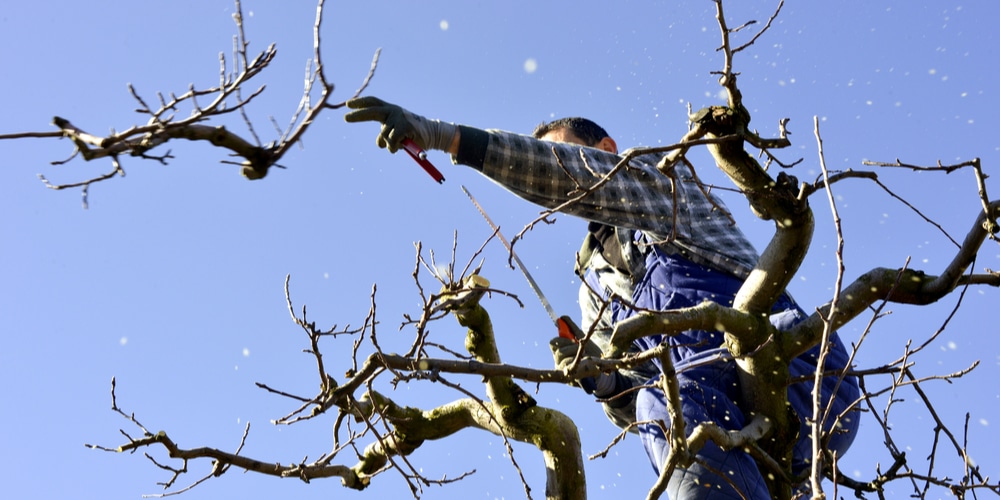There are many reasons a homeowner might choose to top a tree. Overgrowth, aesthetics, and nearby power lines are just a few things that require tree trimming. Still, anyone who’s paid an arborist to take down or trim a tree knows how costly it can get, so it’s reasonable to want to take on the task yourself.
If you’re prepared with both the knowledge and skill to top your tree yourself, this article is for you.
What Is Topping a Tree?
Topping a tree involves trimming up the uppermost branches of a tree to make it a more desirable shape or height. It’s generally done to keep those branches from creating a hazard, such as tangling with power lines.
Steps to Properly Top a Tree
Before reading further, it’s essential to understand how crucial it is for a professional to be part of the topping process. If you don’t have experience topping trees, you could damage the tree or hurt yourself. So, consult an arborist if you want to handle the job yourself.
The following steps will give you an idea of what goes into topping a tree yourself without killing it.
Gather Your Tools
First, gather your tools. Typically a professional arborist will have the following to top a tree:
- Chainsaw
- Rope
- Protective gear
- Ladder
- Large machinery (if necessary)
- Wood chipper
However, as a homeowner, you might not have access to all of that equipment. At the very least, you want a chainsaw, ladder, rope, and protective gear. A wood chipper will help if you need to dispose of your cuttings.
Take Safety Precautions
The most crucial aspect of tipping a tree without killing it is taking the correct safety precautions. Being safe means using the proper tools to maintain your tree’s integrity while preventing injuries to anyone in the area.
First, ensure you have enough space. If you plan to take down large branches or foliage around power lines or structures, make accommodations to ensure you don’t cause damage. Accommodations could involve making smaller cuts, working with a team, and asking neighbors to stay in their homes while you work.
Second, always check your tree’s lean. If it’s heavier on one side, you want to avoid overcutting the other side. Although it might not be a problem immediately, eventually, you could see your tree weaken or tilt further. A significant lean could also pose a risk if you cut too much. A tree that’s already slightly unstable could topple if you don’t monitor your work.
Trim
After you’ve gathered your tools and assessed the area for safety, it’s time to top your tree. Again, you should only take this on if you have professional experience with tree trimming or topping.
When topping a tree, you want to start small. Avoid removing large sections, as that could cause your tree to become unsightly or unstable. Instead, start with smaller branches and sections, then go bigger if appropriate.
When making your cuts, start by cutting your tree using your preferred notch. Always cut just outside the crook, and avoid leaving a significant amount of branch behind. Then, double-check your surroundings before dropping any cuttings to the ground.
Dispose of Your Cuttings
Once satisfied with your tree topping, dispose of your cuttings properly. You can opt to mulch them, use them as kindling, or have your city take them away. Whichever option you choose, be sure to take care of it quickly.
Final Thoughts
Topping a tree is a task only a professional should undertake. If you plan to top your own tree and don’t want to kill it, consult with an arborist first, then follow the steps listed here. Combined, this article and your arborist will give you the tools you need to succeed.
You may also be interested in finding out how to plant pecan trees from a seed.
